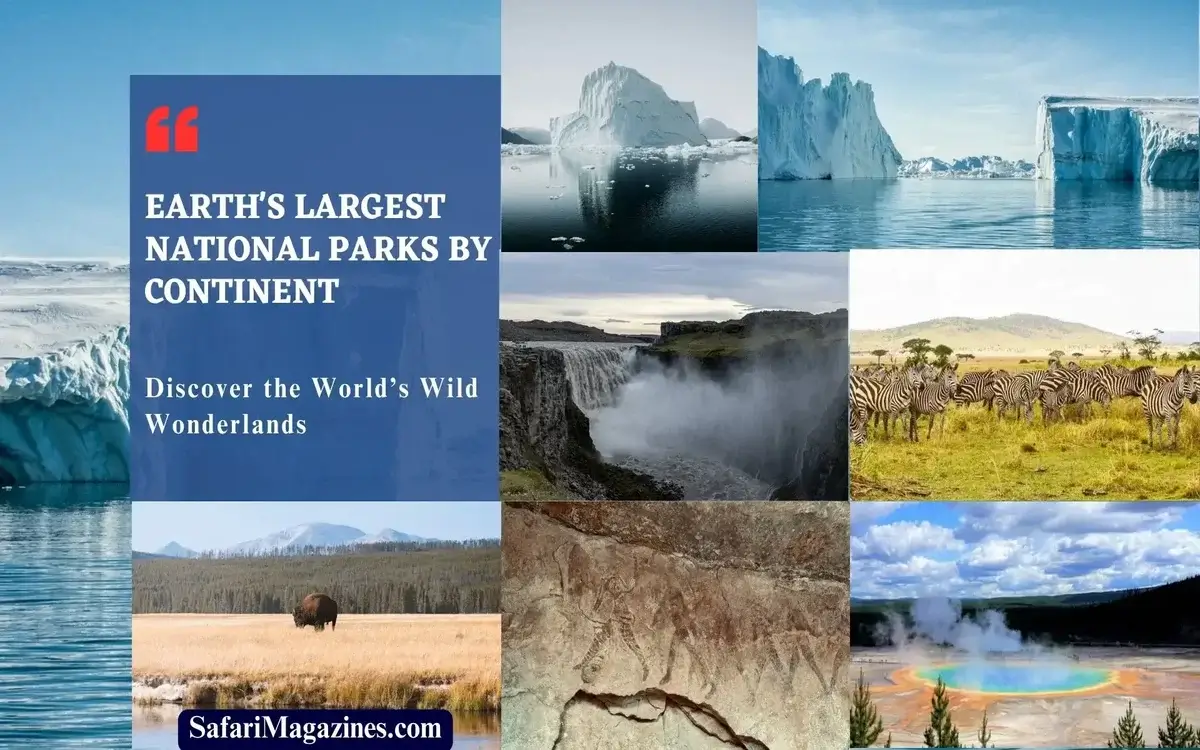
Earth’s Largest National Parks by Continent, World’s Wilds Wonderlands. National parks are symbols of natural beauty, protecting various ecosystems and stunning landscapes over vast areas of our planet. From the rugged wilderness of North America to the ancient rainforests of Asia, each continent marks its own set of amazing national parks. So, let’s explore the largest national parks by continent, learning about their special characteristics and environmental importance.
Table of Contents
ToggleCriteria for Selection of World’s Biggest National Parks
When determining the largest national parks by continent, several factors were considered, including:
- Total Land Area: The primary criterion for selection was the total land area encompassed by each national park. Parks with larger land areas were prioritized in the list.
- Geographical Features: The diversity and uniqueness of geographical features within each national park, such as mountains, forests, rivers, and unique rock formations, were also taken into account.
- Biodiversity: The richness of biodiversity and the presence of rare or endangered species within the park were considered as indicators of ecological significance.
- Cultural and Historical Importance: National parks that hold cultural or historical significance, including indigenous heritage sites or ancient archaeological sites, were given additional consideration.
By evaluating these criteria, we have compiled a list of the largest national parks by continent, each offering insight into the wonders of our planet’s natural heritage.
North America’s Largest National Parks
Wrangell-St. Elias National Park and Preserve, USA
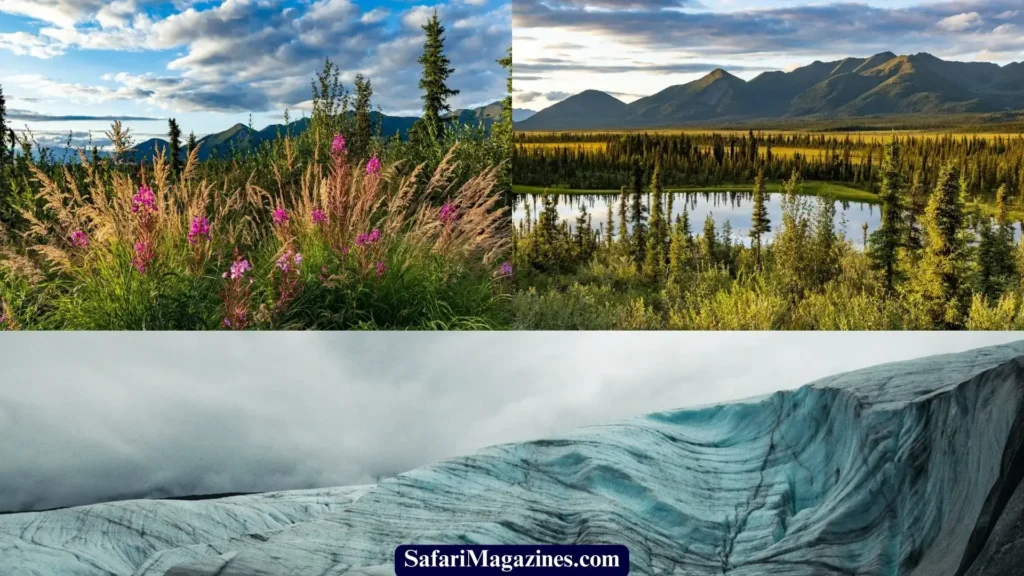
Located in the heart of the Alaskan wilderness, Wrangell-St. Elias National Park and Preserve is the largest national park in North America. It is encompassing over 52,600 sq.-km of rugged terrain. This vast expanse of protected wilderness includes towering mountains, massive glaciers, and pristine rivers. It is offering unparalleled opportunities for outdoor adventure and exploration. So, visitors to Wrangell-St. Elias can hike through ancient forests, witness the spectacle of calving glaciers, and encounter a rich diversity of wildlife, from grizzly bears to Dall sheep. With its stunning landscape and abundant natural beauty, Wrangell-St. Elias National Park and Preserve is a testament to the grandeur of North America’s natural landscapes.
Yellowstone National Park, USA
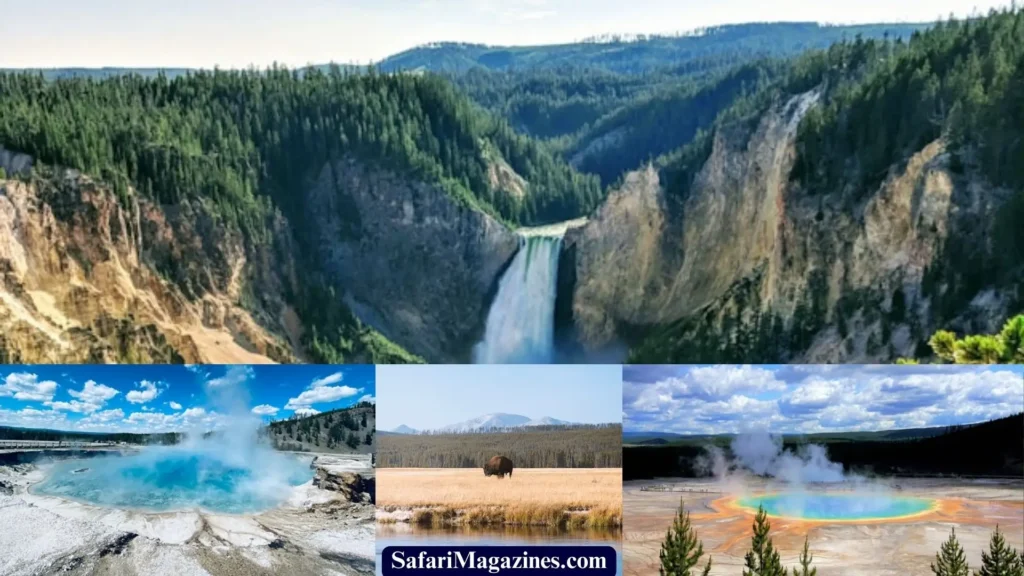
Nestled primarily in the U.S. states of Wyoming, Montana, and Idaho, Yellowstone National Park reigns as a testament to the raw power of nature. This National Parks is spanning over 9,065 sq.-km. It is distinguished as the first national park in the world. Yellowstone is known for its mesmerizing geothermal features, including the iconic Old Faithful geyser, which erupts with remarkable regularity. So, beyond its geothermal wonders, the park is a haven for wildlife, with populations of grizzly bears, wolves, and bison roaming its vast expanse.
Continue reading: Earth’s Largest National Parks by Continent: Discover the World’s Wilds
South America’s Largest National Parks
Canaima National Park, Venezuela
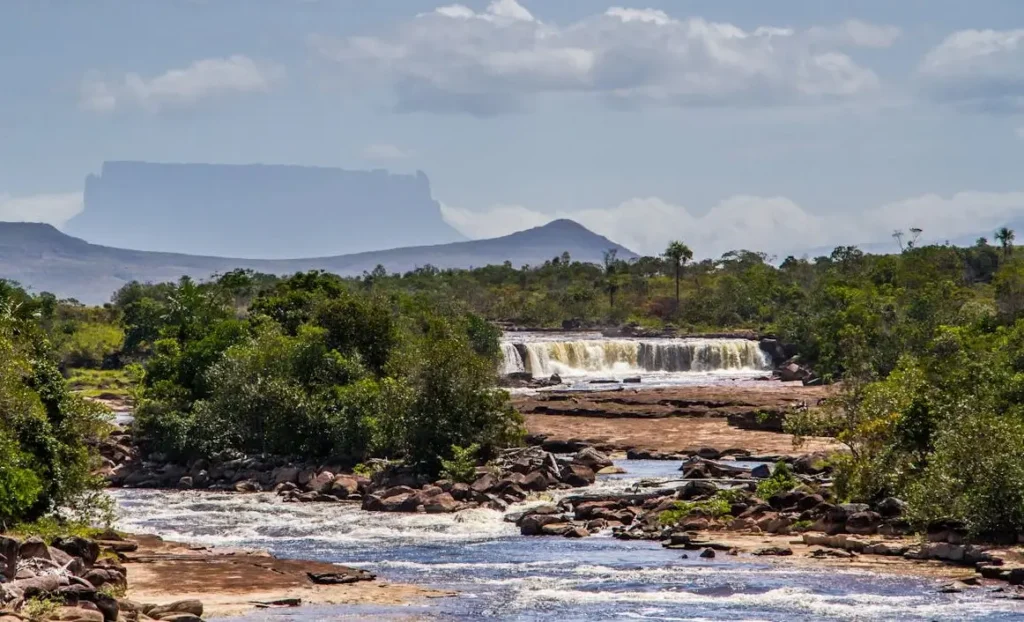
Located in southeastern Venezuela, Canaima National Park is the largest national park in South America. It is covering an expansive area of over 30,000 sq.-km. This UNESCO World Heritage Site is famous for its beautiful landscapes. including the iconic tabletop mountains known as tepuis, towering waterfalls such as Angel Falls (the world’s highest), and vast tropical rainforests. Canaima is home to a rich diversity of animals and plants, including unique species found nowhere else on Earth. Visitors to the park can go on unforgettable adventures. For example, they can hike through ancient forests and kayak along clear rivers. They can also see the stunning beauty of the cascading Angel Falls from the heights above. Canaima National Park is a true natural wonder and a testament to the incredible biodiversity of South America.
Torres del Paine National Park, Chile
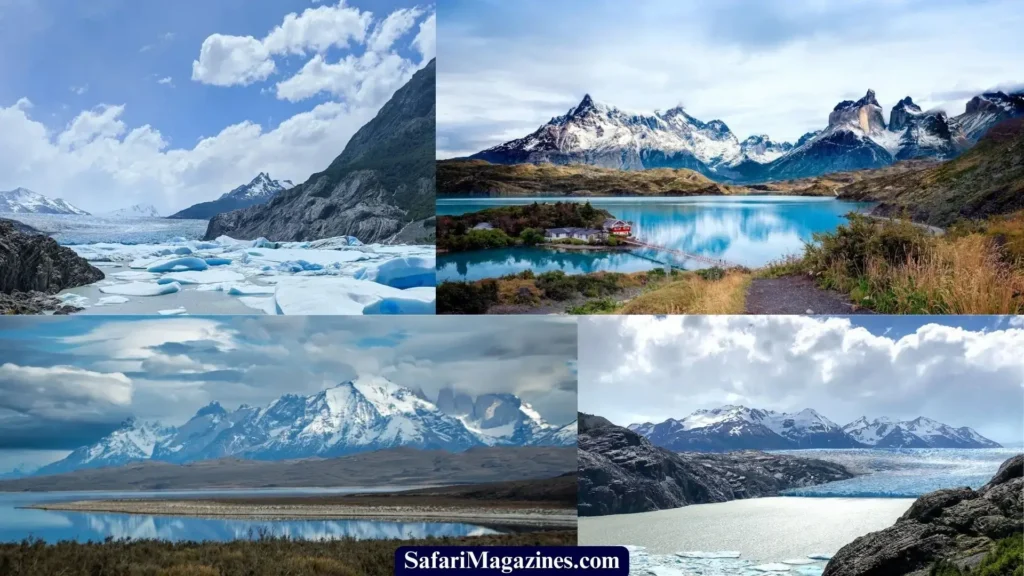
Located in the southern reaches of Chilean Patagonia, Torres del Paine National Park enchants visitors with its dramatic landscapes and wilderness. This National Park is covering an area of approximately 2,400 sq.-km. It is famous for its towering granite peaks, turquoise lakes and sprawling glaciers. The park’s diverse ecosystems support a wealth of wildlife, Such as guanacos, pumas, and Andean condors. As a result, this making it a paradise for nature enthusiasts and photographers alike.
Continue reading: Earth’s Largest National Parks by Continent: Discover the World’s Wilds
Greenland (North America and/or Europe)
While Northeast Greenland National Park is geographically located within the North American tectonic plate, Greenland itself is often culturally and politically associated with Europe due to its historical ties with Denmark, a European country. In addition, Greenland is part of the Kingdom of Denmark, a European country.
Northeast Greenland National Park
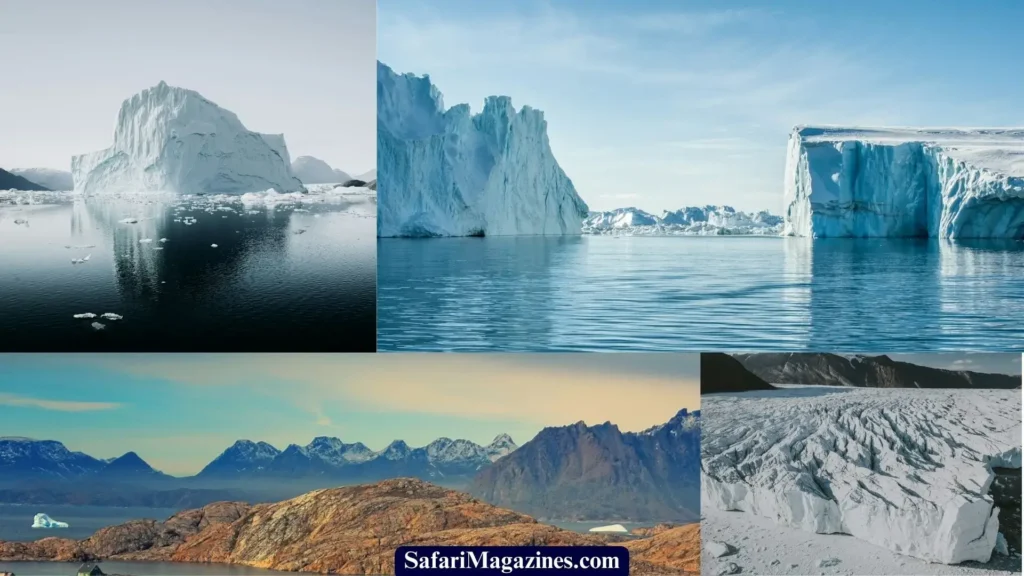
Northeast Greenland National Park, situated in the remote Arctic wilderness, is the world’s largest national park, covering an area of over 971,240 sq.-km, (375,000 square miles). In addition to its stunning landscape of ice caps, fjords and tundra, Greenland National Park is home to polar bears, arctic foxes and musk oxen. So, the park’s vast expanses act as vital habitats for Arctic wildlife. This national park also contributes to ongoing scientific research on climate change and biodiversity in the region.
Continue reading: Earth’s Largest National Parks by Continent: Discover the World’s Wilds
Europe Continent’s Largest National Parks
Yugyd Va National Park, Russia
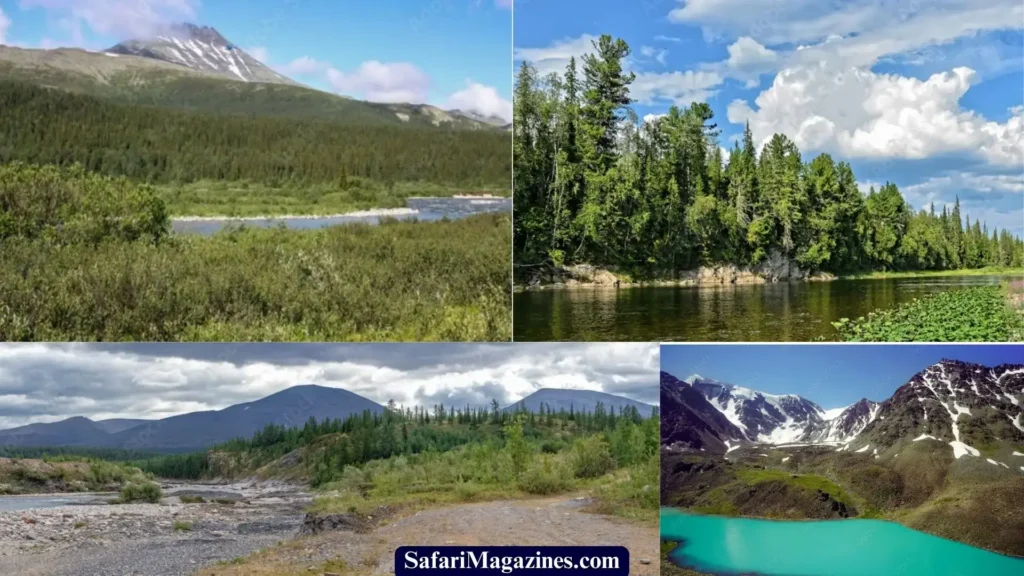
Located in the Ural Mountains of Russia, Yugyd Va National Park is the largest national park in Europe. It’s covering a vast area of more than 19,000 sq.-km of pristine wilderness. It includes rugged mountains, vast forests and crystal clear lakes. So, Yugyd Va offers visitors the opportunity to enjoy the untouched beauty of the Ural Mountains. In addition, the park is home to many animals and plants. This including rare species such as the Siberian lynx and European brown bear. With its breathtaking landscapes and abundant wildlife, Yugyd Va National Park is a testament to the natural splendor of Europe.
Vatnajökull National Park, Iceland
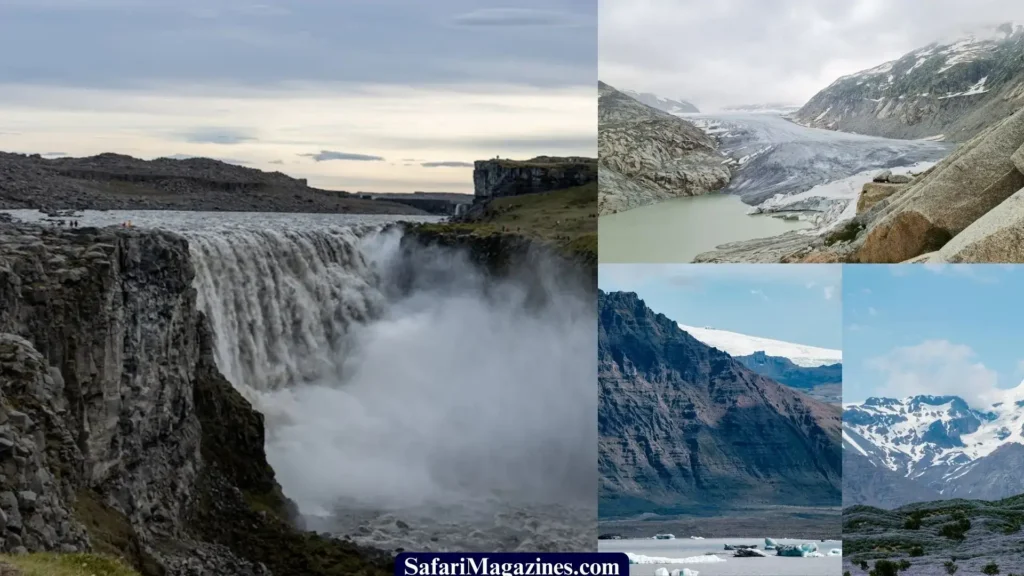
In the heart of Iceland, Vatnajokull National Park stands as a frozen world of unparalleled beauty. It is encompassing Europe’s largest glacier. Along with its volcanic view and cascading waterfalls, Vatnajokull Park offers a insight into the geological forces that shape our planet. Stretching over an area of 13,470 sq.-km, it acts as a living laboratory for climate research. As a result, this providing valuable insights into the impacts of global warming on glacial environments.
Continue reading: Earth’s Largest National Parks by Continent: Discover the World’s Wilds
Asia Continent’s Largest National Parks
Sanjiangyuan National Park, China
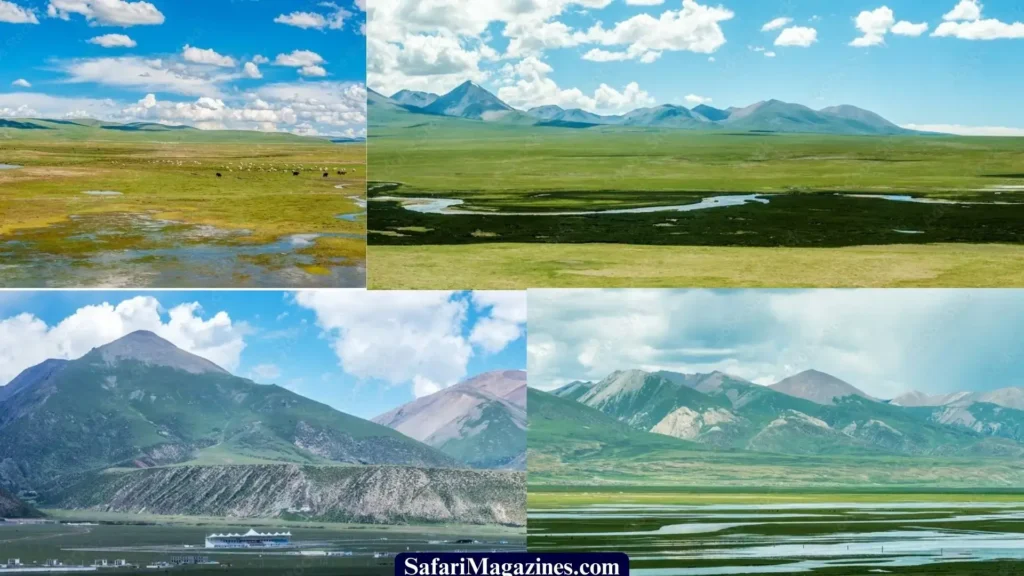
Sanjiangyuan National Park, located in the high-altitude Tibetan Plateau of China. It is famous for its unique alpine ecosystems and its vital role in preserving fresh water. This National Park is the largest National Park in Asia. Sanjiangyuan National Park is Covering an area of over 152,000 sq-km. It serves as the source of three of Asia’s major rivers: the Yangtze, Yellow, and Mekong. The park is home to rare species such as the Tibetan antelope and snow leopard. This making it a hotspot for biodiversity and environmental research.
Taman Negara National Park, Malaysia
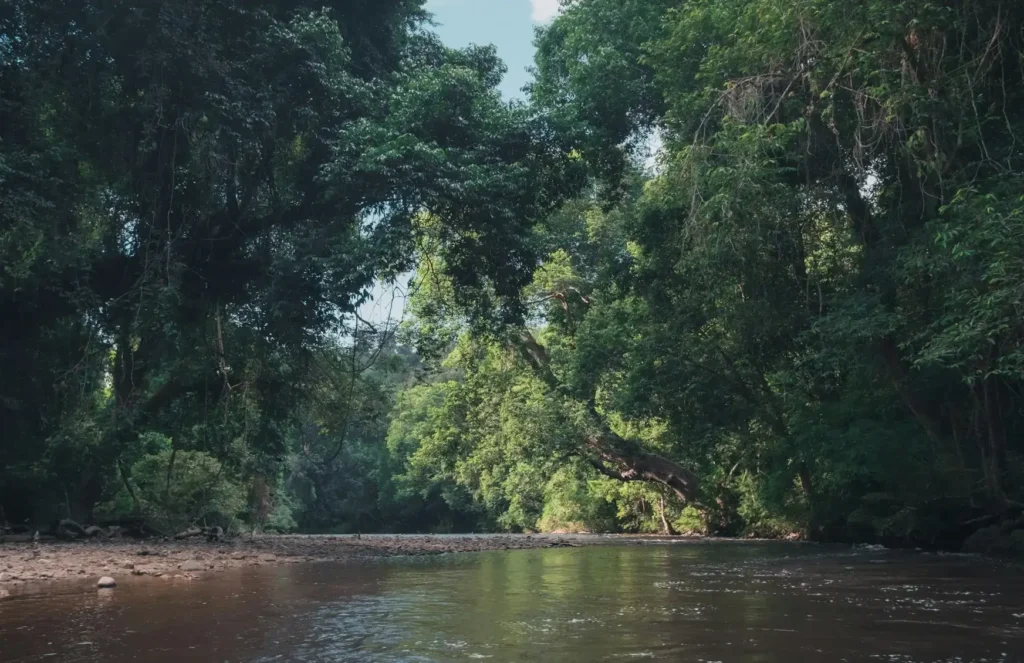
Deep within the ancient rainforests of Malaysia lies Taman Negara National Park, spanning over 4,140 sq-km. This national park is also known as a good place for biodiversity. It is home to some of the oldest tropical rainforests in the world. For example, it is teeming with life, such as elusive tigers, Asian elephants, colorful birds and peculiar insects. So, Visitors to Taman Negara can explore its lush jungle trails, go on river safaris. They can also visit remote villages and enjoy the rich cultural heritage of the indigenous peoples that call this wilderness home.
Continue reading: Earth’s Largest National Parks by Continent: Discover the World’s Wilds
Africa Continent’s Largest National Parks
Tassili n’Ajjer National Park, Algeria
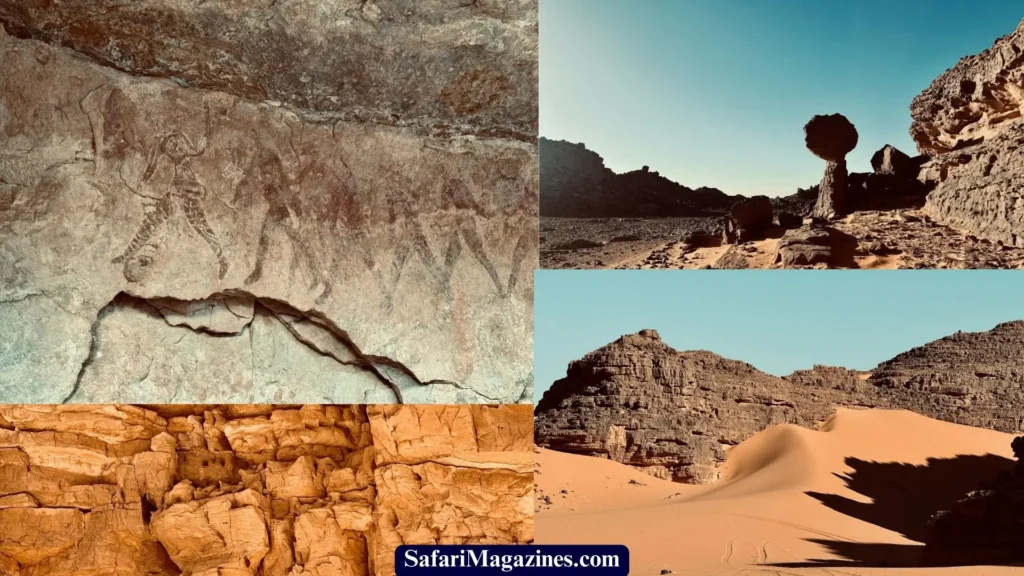
Tassili n’Ajjer National Park, located in southeastern Algeria, is the largest national park in Africa. It is spanning an area of over 72,000 sq.-km. This UNESCO World Heritage Site is renowned for its ancient rock formations, ancient cave paintings, and vast Sahara. With its rich cultural heritage and unique geological features, Exploring Tassili N’Ajjer is a journey through time. So, this offers visitors an insight into ancient civilizations and the raw beauty of the Sahara.
Serengeti National Park, Tanzania and Kenya
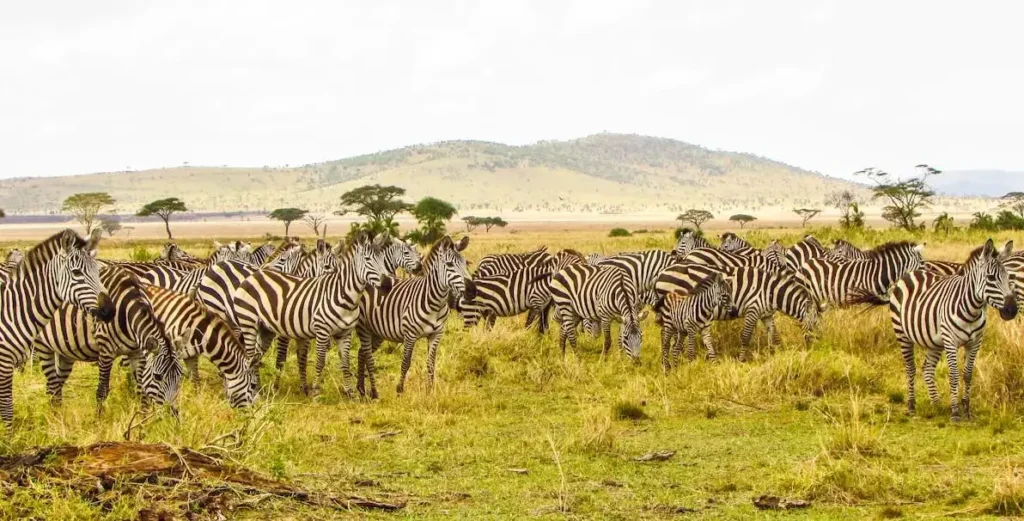
Stretching across the savannas of Tanzania and Kenya, Serengeti National Park is synonymous with the epic drama of African wildlife. This National Park covering an area of approximately 14,760 sq.-km. It has the largest terrestrial mammal migration on Earth. Because of the millions of wildebeest and zebras that cross its plains in search of greener pastures. In addition to migration, the park is home to predators such as lions, leopards and cheetahs. This provides unparalleled opportunities for wildlife viewing and conservation research.
Australia Continent’s Largest National Parks
Munga-Thirri–Simpson Desert National Park, Australia
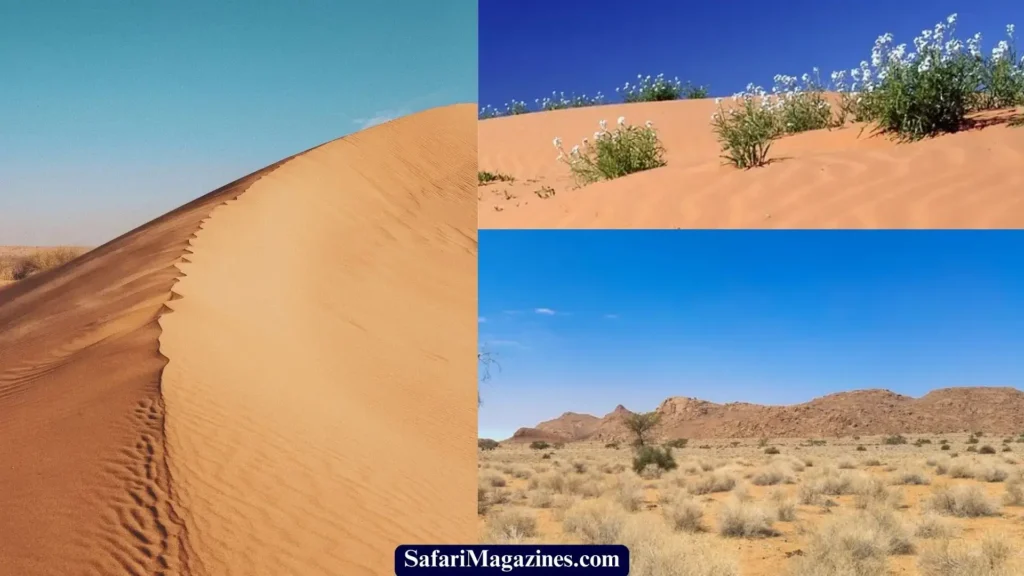
Located in the driest region of Australia, the Munga-Thirri–Simpson Desert National Park is situated in the heart of the Simpson Desert. It is a prime example of a parallel dunal desert. It also holds the title of being the largest national park in Australia. This National Park is spanning 36,000 sq.-km. Within the park you can find many desert wildlife thriving there. It also consists of diverse dune systems, extensive playa lakes, spinifex grasslands and acacia forests. Additionally, the park is connected to Witjira National Park.
Kakadu National Park, Australia
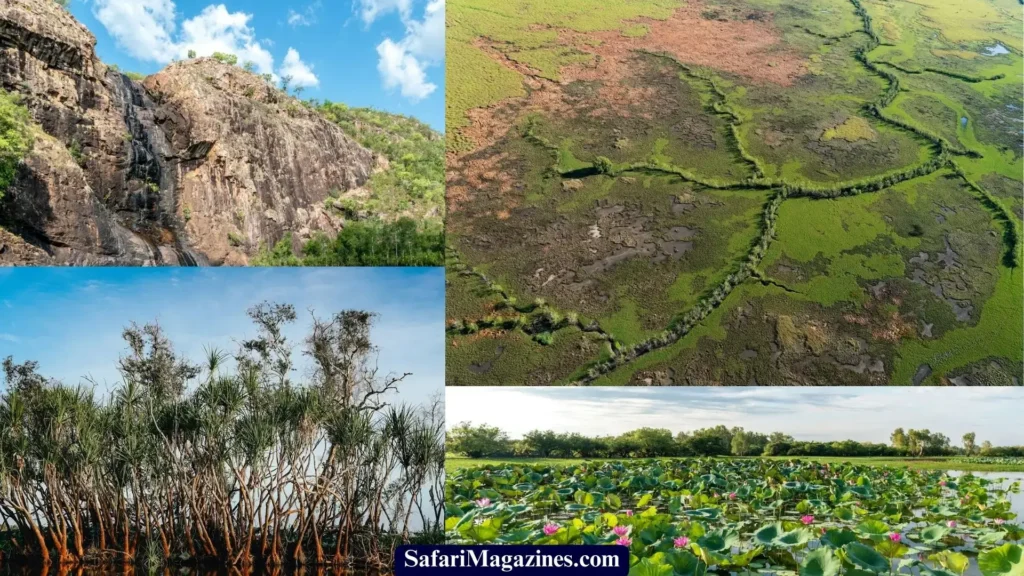
In Australia’s Northern Territory, Kakadu National Park is a cultural and ecological treasure trove spanning over 20,000 sq.-km. It is home to ancient Aboriginal rock art sites dating back thousands of years. So, It provides a window into the rich cultural heritage of Australia’s indigenous peoples. The park’s diverse landscapes encompass wetlands, savannah woodlands, and sandstone escarpments. Therefore, this supports a wealth of wildlife, including saltwater crocodiles, kangaroos, and colorful bird species.
Purnululu National Park, Australia
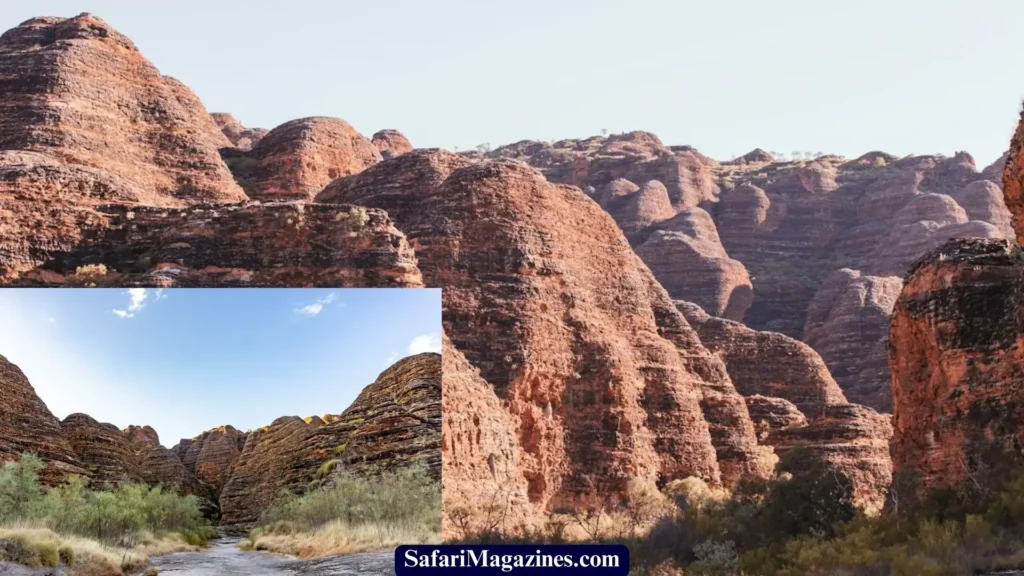
Nestled in the Kimberley region of Western Australia, Purnululu National Park is one of the largest national park in Australia. It’s covering over 2,000 sq.-km. Its most iconic feature is the Bungle Bungle Range, a series of sandstone domes that rise dramatically from the surrounding plains. So, with its rugged landscapes, hidden gorges, and rich Aboriginal heritage, Purnululu National Park is a UNESCO World Heritage Site. It also the must-visit destination for travelers seeking for adventure and exploration.
Read more:
Summary of World’s National Parks
Earth’s Largest National Parks offer a sight into the incredible diversity and beauty of our planet’s natural landscapes. From the geothermal wonders of Yellowstone to the ancient rainforests of Taman Negara, and the remote arctic wilderness of Northeast Greenland. These protected areas serve as vital refuges for diversity in biology and sources of guidance for future generations.
FAQs about the Largest National Parks in the world
Q1. What are national parks?
A1: National parks are protected areas designated to preserve unique landscapes, ecosystems, and cultural heritage for future generations.
Q2. How many national parks are there globally?
A2: There are over 6,000 national parks worldwide, encompassing a wide range of environments and habitats.
Q3. Why are national parks important?
A3: National parks play a important role in conserving biodiversity, protecting natural resources, and providing opportunities for recreation and education.
Q4. Can I visit these national parks?
A4: Yes, many of these national parks are open to visitors, offering various activities such as hiking, wildlife viewing, and guided tours.
Q5. How can I support national parks conservation efforts?
A5: You can support national parks by practicing responsible tourism, volunteering with conservation organizations, and advocating for policies that protect natural areas.
